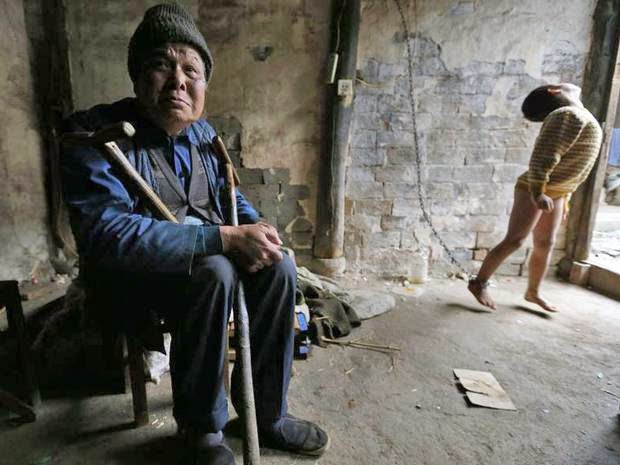
In recent years there have been several media articles about mentally ill people in China being chained up – usually by families – because there are no mental health services.
The impression given by the articles is that this is a widespread practice and is going unchallenged. “This is an example of how mental disorders are dealt with in rural China” said The Independent. It is enlightening, therefore, to read that such practices are rare and have been targeted for elimination for more than a decade. In a sobering paper published in PLOS One this week, Dr Lili Guan and colleagues at the Peking University Institute of Mental Health talk abut the so-called 686 program that has been running since 2005 to provide basic mental health services and ensure human rights are upheld for people with severe mental disorders.
In their article they describe how they recruited village health workers across China to seek out and identify mentally ill people who had been chained up by families. Their program found 271 such people – some of whom had been in chains for 28 years, but most had been chained for shorter periods and intermittently as circumstances arose, rather than continuously. Cases of chaining were rare – accounting for only 0.2% of mental health patients reviewed in the program.
Most of the chained people had schizophrenia and none of them were receiving care from mental health institutions, usually because there were no such community services in their area, or the families could not afford it. The patients were restrained mostly because they were violent and abusive, causing harm to people and property.
The program of ‘unlocking’ was focused on providing free antipsychotic medications. Patients were first admitted to psychiatric units and assessed, and then families were provided with free medications and a treatment plan. The ‘unlocked’ patients were then returned home to live in the community.
The good news from the program is that regular treatment rates went from 1% to 75% and most patients complied with treatment and showed great improvements. Their functioning improved and the family burden also lightened significantly. Relapse into ”locking’ occurred with only 21 patients (8%), with families citing lack of adherence to medication and return to violence or harmful behaviour and lack of caretaker/financial resources to access help.
“The finding that more than 92% of those unlocked and entered into continuous treatment by the 686 Program remained free of restraints by 2012 demonstrates the feasibility of improving the human rights of persons with severe mental illness by increasing access to mental health care in the community, even with limited societal resources,” the researchers said.
“Nevertheless, the failure to prevent relocking for 21 individuals suggests that considerable room for improvement of our mental health care practice still exists.”
The researchers also noted that their program covered less than 1% of the population of mentally ill people in China, and said it would require more resources to allow it to cover the whole country.
“There is obviously much to be done in China to scale up the 686 Program for the whole nation and to improve quality of care. This will require substantially increased investment in mental health services. However, the success of the program in maintaining the severely ill individuals in treatment over three to seven years, and the benefits of the intervention for those who have lived for years with untreated psychosis and for their families, attests to the feasibility and social value of the “686” model.”
Authors note: Restraint for people with mental illness is not uncommon practice in western countries, particularly for elderly people in nursing homes. Medical groups in countries such as Australia have expressed concern that patients who are agitated and have challenging behaviour are sometimes restrained due to lack of staff to cope and for convenience, rather than for their own wellbeing.
